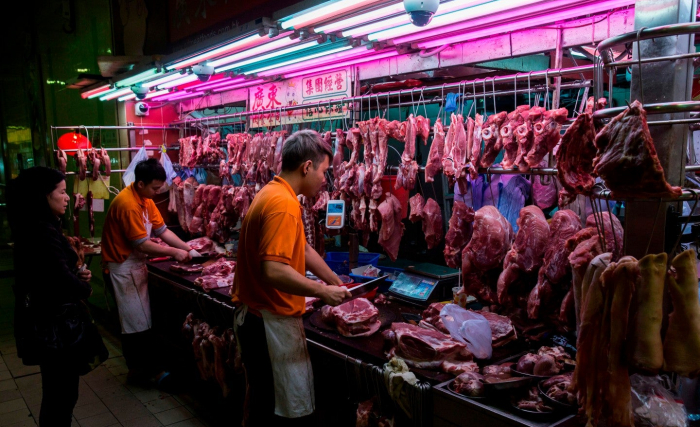Several experts have called for the closing of live animal markets in response to the Wuhan coronavirus outbreak. We’ve known for a long time that wet markets, or markets that sell live animals, both wild and domestic, can be a source for diseases that are new to humans. On Jan. 26, China put in place a temporary ban on wild animal trade. But is that a viable way to stop future outbreaks? Is it really that simple?
New to humans. That’s a key point here because while mammals like bats may harbor a high diversity of viruses, they typically do not get sick from them. Organisms coevolve with the pathogens they carry, like our relationship with the flu. We are all hosts to bacteria, viruses and parasites. Not all of them make us sick, but if something new comes into our body that we haven’t seen before, that might.
What many experts are wary of is mixing within an intermediary host, meaning pathogens like viruses can transfer from the OG host to another animal and then mix and mutate there before jumping into humans. It can happen in the other direction, too, where one of our pathogens can get into animals and make them sick.
This all can happen naturally in the wild. No one is going around cleaning up poop from the forest floor. But putting animals closer together in a wet market increases the chances that something might happen. Chinese wet markets are known to have high diversity of animals all within the same area, which is why experts are concerned and calling for them to be closed or banned.
To ban or not to ban?
Here’s a hot take: Banning wildlife as food in parts of the world where people eat wildlife as a source of protein may be culturally similar to trying to ban lobster or deer in the U.S. There are some potential parallels here. Lobster is a wild-caught source of protein that many people consider to be delicious. Historically, lobsters used to be abundant and only eaten by poor people, but after years of exploitation it has become a regulated industry to protect dwindling populations.
Another thing to consider is that bans usually don’t work. While there is information about legal wildlife trade, there’s very little known about illegal wildlife trade. If Chinese governments close official markets, trade in live animals may continue in smaller, harder-to-track black markets. That’s exactly what happened after SARS in 2002-2003. When the Chinese government tried to ban wet markets in 2013, that led to black markets.
To truly enforce a ban on wildlife trade, you would need a lot of resources to confiscate animals from hunters leaving their wild habitat all the way up the chain to markets where consumers may buy the animals.
And wildlife trade isn’t just happening in China. Wildlife is also brought into China from neighboring countries like Vietnam, so officials would have to monitor the borders more closely. And the U.S. is not a bystander to wildlife trade. In fact, the U.S. is one of the largest importers of wildlife in the world, and mostly for the pet trade so all of those animals are alive.
It’s a complex issue, but some experts think that community-focused approaches to inform people about protecting wildlife and potential health hazards from eating wildlife would be successful. After SARS, there were new regulations to sanitize markets regularly in Hong Kong. A stall owner in Hong Kong says, “it's much cleaner in the Hong Kong markets. It's so different from what's happening in mainland China,” according to NPR.
A long history of humans eating animals
Humans have been eating animals for a long time, and most of the time, someone is exposed to a live animal before it is dead. And certainly someone handles the raw meat before it is cooked. In Western countries, we’ve become accustomed to buying our animals prepackaged and refrigerated, but it’s still common in many places in the world to buy animals alive.
According to a survey in 2008, “the main consumption groups in China are male and young people with high education levels and good incomes.” The authors of the study suggest that the key for public awareness is giving people information about the negative impacts of consumption of wildlife in the context of conservation. From a health perspective, it can be safe to eat wildlife, as exemplified by the thousands of people who salvage and eat roadkill each year in the U.S.
It may be tempting to try to assign blame or look for a convenient fix in an emergency like this new coronavirus from Wuhan, but doing so won’t help the tens of thousands of people who are already affected by it. And it turns out, some experts say that the Wuhan seafood market may not be where the virus originated. Until we know more, the best we can do is try to understand what has contributed to allow the outbreak to happen and to study the situation so we’ll know more for the next time it happens.
The Hill
More about: China
















































